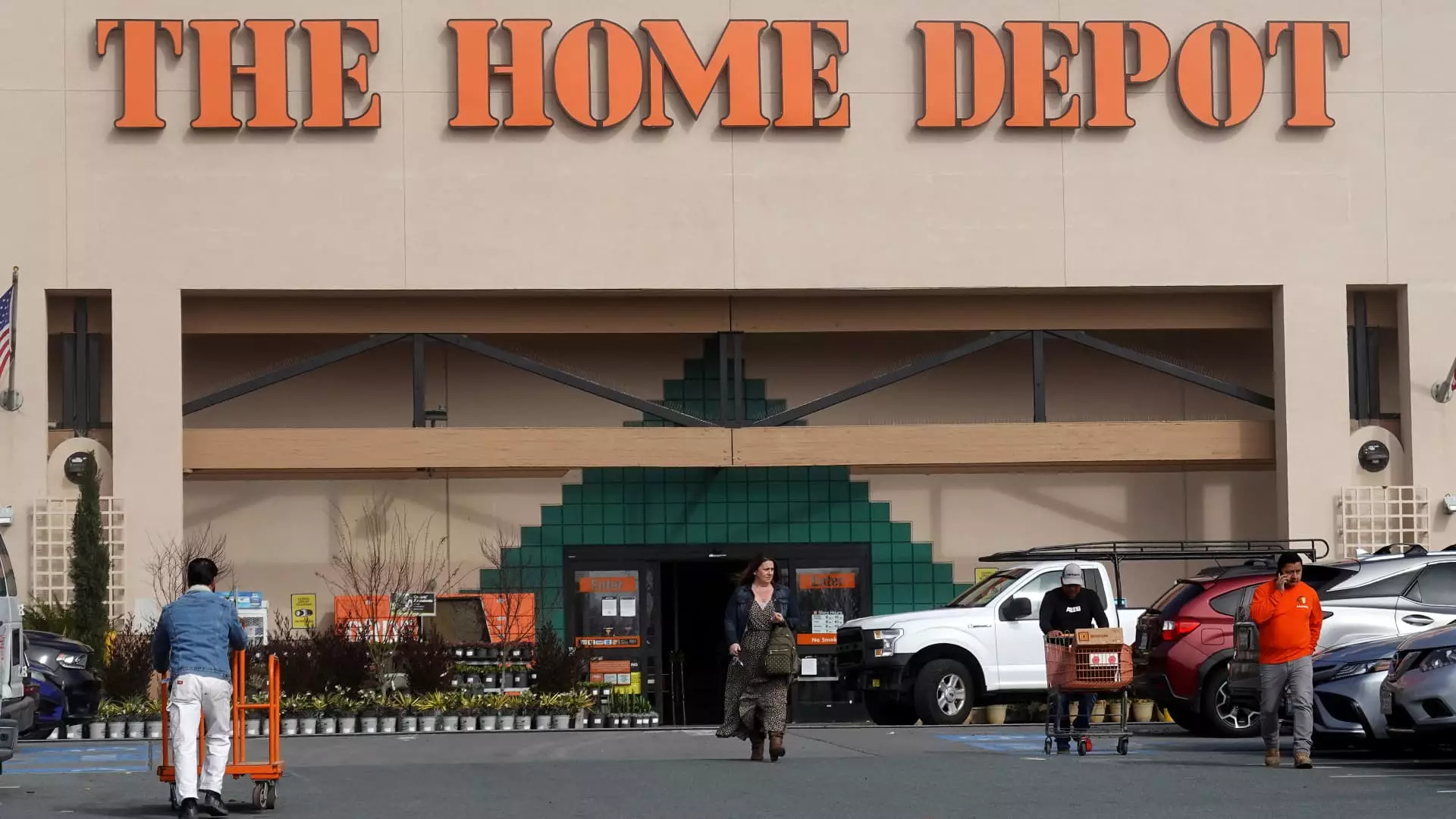When discussing the future landscape of home improvement retailers, particularly giants like Home Depot, it is essential to dissect the underlying currents affecting their business trajectory. Despite the alluring prospects of seasonal sales events, such as the much-publicized Memorial Day outdoor sales, reports indicate a rather troubling outlook for this retail behemoth. The upcoming financial figures and market conditions suggest that investors should temper their expectations regarding Home Depot’s growth and resilience.
The Illusion of Seasonal Prosperity
Undoubtedly, the spring season is typically an essential time for Home Depot, as it aligns with the gardening boom. The festive allure of gardening, often dubbed the “Christmas” of home improvement retail by trendsetters like Jim Cramer, is expected to draw customers in droves. However, the reality is that such enthusiasm may only mask deeper issues affecting consumer sentiment. The typical indicators that drive spending in outdoor sales—warm weather, home renovation demand, and landscaping enthusiasm—are all subject to fluctuating economic variables.
In fiscal year 2024, Home Depot recorded $20.83 billion in indoor and outdoor garden sales, a modest 1.29% increase over the previous year. While this figure may appear encouraging, it accounts for only about 13% of the retailer’s total sales, pointing to a concerning reliance on external factors to boost their revenue. The core business, which includes lumber and paint, represents even less of their performance, raising questions about the overall sustainability of their revenue model.
Turbulence in the Housing Market
A significant factor influencing Home Depot’s stock is the stagnant housing market, exacerbated by consistently high mortgage rates. As of now, the average for a 30-year fixed-rate mortgage remains close to 7%, a rate that could stifle homebuying enthusiasm. Although recent data indicates an uptick in loan demand, these veiled glimpses of recovery are hardly a ‘green light’ for investors.
Analysts are duly concerned about the housing turnover rate’s stagnation, which is critical for companies like Home Depot that thrive when homeowners engage in renovation projects. The anticipated announcements from Home Depot regarding first-quarter earnings are crucial; Bernstein analysts have flagged concerns regarding “unfavorable weather, weak consumer sentiment, and mixed performance from peers and suppliers.” If these persistent issues manifest into a lackluster earning report, it will serve as a wakeup call for those optimistic about Home Depot’s potential.
Tariffs and Economic Headwinds
Another element that complicates Home Depot’s future is the looming threat of tariffs. While there are rumors of a de-escalation in trade tensions between the U.S. and China, the economic ramifications of tariffs could still create significant volatility in Home Depot’s supply chain. Analysts posit that while immediate challenges may arise from these tariffs, an eventual recovery could materialize. However, lingering uncertainties will likely weigh heavily on stock performance and investor confidence in the short term.
Despite some analysts maintaining an optimistic outlook, there is a growing sentiment that suggests Home Depot is at the mercy of macroeconomic forces beyond its control. The perspective offered by analysts at UBS reflects an uncomfortable reality: unless Home Depot can find ways to mitigate these risks, the financial landscape may continue to look bleak.
Disparities Between Home Depot and Broader Markets
Interestingly, while Home Depot’s stock has faltered, the S&P 500 has managed to build positive momentum this year, showcasing a stark disparity in performance. Home Depot shares have fallen roughly 2.5% year-to-date, placing them roughly 12% below their record-high close of over $431. This dissonance raises critical questions about the viability of Home Depot’s strategies amidst broader market trends.
In a climate where many companies are finding ways to innovate and drive stock prices upward, Home Depot’s inability to resonate with current consumer behaviors will be thoroughly scrutinized. Competitors may capitalize on Home Depot’s setbacks, further diminishing its market position.
Clouded Optimism for Future Sales Growth
Looking toward the second quarter, expectations for a modest revenue increase are set against an uncertain backdrop. However, the forward-looking guidance provided alongside first-quarter earnings reports may not paint an entirely rosy picture. Despite upbeat forecasts predicting a revenue growth of around 5.3%, the overall sentiment in the air seems to fluctuate between guarded optimism and skepticism.
Jim Cramer himself has reflected that mortgage rates need to drop below 6.5% to stimulate the housing market significantly. Until that pivotal change occurs, Home Depot may toil under the weight of sluggish consumer activity, erratic tariffs, and a challenging housing market. Therefore, even as spring usher in gardening enthusiasm, the shadows cast across the company’s future suggest that more substantial challenges loom over Home Depot’s landscape.

